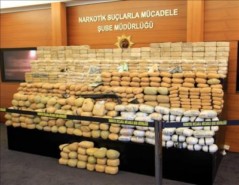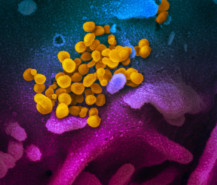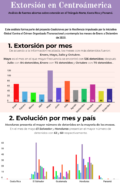Posted on 29 Jun 2015
In July 2014 John Warwick, a 64-year-old Australian, was arrested at Guangzhou airport in China when nearly 1.9 kilograms of methamphetamine, also known as ice, was discovered in his luggage. Mr Warwick was barely mobile, going blind in one eye, had a bad heart, Type-2 diabetes and gout. All but confined to his home, Mr Warwick became hooked on replying to spam emails offering money and adventure. As a result of his online activity Mr Warwick made two trips to China to visit Lee Wang. While there he was introduced to a “friend” claiming to be from Ghana. On the first journey Mr Warwick was given a DVD player and package of clothes to bring back to Australia. On his second trip he was again given a DVD player by his Ghanaian “friend”. It was in this DVD player in which the ice was discovered at Guangzhou airport. Mr Warwick died shortly after in a Chinese hospital.
Unfortunately Mr Warwick’s story is not unique. In 2014 11 Australians were imprisoned in China on suspicion of smuggling drugs. Several of them are intellectually disabled or mentally ill and claim to have been duped by online scams.
The organized criminal group that exploited Mr Warwick exemplifies the cross-cutting, transnational, cyber-enables nature of transnational organized crime seen today. The Australian Crime Commission (ACC) report Organized Crime in Australia 2015 specifically outlines existing and emerging organized crime threats impacting on the Australian community and national interests. The report identifies three key capabilities organized criminal actors are currently exploiting:
- The ability to conceal criminal activity by integrating into legitimate markets;
- Technology and online capabilities; and
- The globalization of organized crime.
The story of Mr Warwick typifies the second two capabilities. In addition, Mr Warwick’s story illustrates how organized crime actors adapt to global markets, capitalizing on demand for illicit products – here, the increasing demand for ‘ice’ in Australia.
The following summarizes relevant points from Organized Crime in Australia 2015 in the context of Mr Warwick’s story, which exemplifies not only serious and organized crime trends seen in Australia, but around the globe. (For example see Interpol: new responses to the challenges of global policing.)
Technology and online capabilities
In Australia the threat of cybercrime and technology-enabled crime perpetrated by international and domestic organized crime groups is significant. As Organized Crime in Australia 2015 reports, advancing technologies and the online environment have presented new opportunities for organized crime to take advantage of society’s reliance on the Internet. The use of technology and the cyber environment by the majority of the community has opened new gateways for innovative methods of criminal targeting and compromise. Serious and organized criminals have proven themselves adept at identifying and exploiting new and emerging technologies to facilitate their crime, to expand their reach, and to provide them with the anonymity and distance from their crime which makes it difficult for law enforcement to detect and identify them. The phenomenon of organized crime of cyber-steroids has also been noted by the Global Initiative.
While cybercrime usually is financially damaging, Mr Warwick’s story illustrates the human-cost of cybercrime. Moreover, as lawyer Dan Mori from the organization Australians Detained Abroad, states scammers target people who are especially vulnerable, namely the lonely or desperate.
The globalisation of organized crime
There are groups, networks and individuals operating at an ‘elite’ criminal level and targeting illicit markets in a number of countries simultaneously. They are highly networked, highly professional and extremely well funded, and they operate with high-level specialist advice that allows them either to evade detection. Cybercrime and cyber-enabled technology have also contributed to the globalization of organized crime. The ACC reports that cybercrime committed against Australians is largely carried out by individuals and organized crime groups based offshore.
In addition, cooperation between organized crime groups is becoming more apparent, as is the intertwining of different types of criminal activities being undertaken by some organized crime groups. For example, as organized crime looks East, China is becoming an increasingly lucrative market for international drug trafficking organizations. In addition, in the case of Mr Warwick the Australian Federal Police (AFP) identified an Australian syndicate, with its roots in West Africa targeting Australians. The syndicate is also tied to a global network trafficking the drug ice from Guangzhou. In turn, Mr Warwick was the victim of a criminal organization spanning the globe, operating on three continents.
Meeting demand – illicit drug markets
As long as there is demand for illegal commodities, organized crime will continue to seek to satisfy this demand. The Organized Crime in Australia 2015 reports that the Australian illicit drug market remains highly lucrative, with serious and organized crime groups capitalizing on high demand and customers willingness to pay higher prices. A senior Australian police officer stated that “we are a very wealthy country and willing to pay higher prices for our drugs. So unfortunately we become very much a sought-after country for drugs to go – it’s just supply and demand, bottom line.”
Currently, and relevantly to Mr Warwick’s story, the ice market is seen to pose the highest risk to Australia. Use of the drug has been on the increase since 2009. While significant production is still occurring domestically, there has recently been a sharp increase in detections of meth at the Australian border, suggesting that transnational organized crime groups are capitalizing on a strong Australian demand for ice and have moved into the lucrative market.
In parallel, China has emerged as the region’s largest producer of crystal meth, specifically Guangzhou. Bordering Hong Kong, the same transport links and geographic advantage that makes Guangzhou a thriving trade and manufacturing hub also makes it attractive for drug syndicates. Jeremey Douglas from the UNODC reflected that “Basically the situation is you have the availability of high-quality chemicals, very skilled chemists and also a growing domestic [drug] market,… Guangdong is a hub for trade so you can use trade channels out of the region to reach end markets.”
Response
The growing complexity and inter-connectedness of transnational organized crime requires a dynamic, multifaceted response. As recognized in Organized Crime in Australia 2015, the increasingly complex nature of the serious and organized crime business model requires effective partnerships to achieve holistic targeting of organized crime, a founding principle of the Global Initiative. It specifically states that without the help of the public in identifying and reporting suspected criminal activity, the environment will never be completely hardened against it.
In addition, the ACC recognizes that responses must reach beyond borders. The ACC states in its report that it will work across borders to discover, understand and respond to the highest risk serious and organized crime threats.
La trágica historia de John Warwick: un ejemplo de las tendencias en materia de delincuencia organizada en Australia
En julio de 2014, John Warwick, un australiano de 64 años, fue arrestado en el aeropuerto de Guangzhou en China, cuando se descubrió que en su equipaje transportaba casi 1,9 kg de metanfetamina, también conocida como “hielo”. Warwick apenas podía moverse, estaba casi ciego de un ojo, tenía problemas de corazón, diabetes tipo 2 y gota. A Warwick lo sedujeron con correos basura en donde le ofrecían dinero y aventuras. Como resultado de su actividad en Internet, Warwick realizó dos viajes a China para visitar a Lee Wang. Allí le presentaron a un “amigo”, quien decía ser de Ghana. En su primer viaje, le dieron un reproductor de DVD y ropa para llevar a Australia. En su segundo viaje, su “amigo” de Ghana le dio nuevamente un reproductor de DVD. Fue en este artefacto en donde encontraron la droga en el aeropuerto de Guangzhou. John Warwick falleció poco después en un hospital en China.
Lamentablemente, el caso de John Warwick no es único. En 2014, 11 australianos fueron arrestados en China sospechados de narcotráfico. Varios de ellos son discapacitados o enfermos mentales que afirman haber sido embaucados por fraudes en Internet.
La organización criminal que explotó a Warwick es un ejemplo de la naturaleza transversal y transnacional, posible gracias a Internet, de la delincuencia organizada en la actualidad. El informe de la Comisión Australiana contra el Crimen (ACC) titulado Organized Crime in Australia 2015, delinea específicamente las amenazas existentes y emergentes que impactan sobre la comunidad australiana y los intereses nacionales. El informe identifica tres competencias clave que los actores criminales están actualmente explotando:
- La habilidad de encubrir la actividad criminal integrándose en mercados legítimos;
- La tecnología y las habilidades cibernéticas; y
- La globalización de la delincuencia organizada.
La historia de Warwick tipifica las últimas dos competencias y muestra, además, cómo los delincuentes se adaptan a los mercados globales, sacando rédito de la demanda de bienes ilícitos – en este caso, de la demanda de “hielo” en Australia.
A continuación, hacemos un resumen de los puntos más importantes del informe, en el contexto de la historia de John Warwick, que ilustra las tendencias graves en delincuencia organizada no sólo en Australia, sino en todo el mundo (para más ejemplos, véase Interpol: new responses to the challenges of global policing).
La tecnología y las habilidades cibernéticas
En Australia, los ciberdelitos y los delitos perpetrados mediante la ayuda de Internet por parte de grupos criminales organizados locales e internacionales constituyen una amenaza importante. Como se informa en Organized Crime in Australia 2015, la delincuencia organizada ha encontrado nuevas oportunidades en los avances tecnológicos e Internet y sacan ventaja de la dependencia de la sociedad a la web. El uso generalizado de la tecnología y del ciberespacio ha abierto nuevas puertas a métodos innovadores para encontrar víctimas y comprometer su seguridad. Los criminales serios y organizados han probado ser expertos en la identificación y explotación de tecnologías nuevas y emergentes que facilitan sus actividades, que expanden su alcance, y que les permiten hacer uso de la anonimidad y la distancia con su actividad para hacer, de este modo, más difícil su detección e identificación. El fenómeno de la delincuencia organizada y su conexión con Internet también ha sido mencionado por Global Initiative en este artículo.
Si bien los costos del ciberdelito son generalmente financieros, el caso de John Warwick es un ejemplo de su costo humano. Además, como señala Dan Mori, abogado de la organización Australians Detained Abroad (australianos detenidos en el exterior), estos delincuentes buscan personas especialmente vulnerables, principalmente aquellas que están solas o desesperadas.
La globalización de la delincuencia organizada
Existen grupos, redes e individuos que operan a un nivel criminal “elitista” y orientan sus actividades a mercados ilícitos en varios países simultáneamente. Están bien conectados, son altamente profesionales, extremadamente acaudalados, y operan bajo el consejo de expertos. El ciberdelito y la tecnología cibernética también han contribuido a la globalización de la delincuencia organizada. El informe de la ACC señala que los ciberdelitos cometidos contra australianos son llevados adelante en gran parte por individuos y organizaciones criminales con base en el exterior.
Además, la cooperación entre los grupos criminales y el entretejido de diferentes tipos de actividades ilícitas son cada vez más evidentes. Por ejemplo, debido a que la delincuencia organizada mira hacia Oriente, China está transformándose en un mercado cada vez más lucrativo para el narcotráfico. Cabe mencionar también que en el caso de John Warwick, la Policía Federal Australiana (AFP) identificó un grupo australiano, con raíces en África Occidental que apuntaba a australianos y que está también conectado con una red que opera a nivel mundial y trafica “hielo” desde Guangzhou. Warwick fue entonces víctima de una organización criminal de alcance global que opera en tres continentes.
Satisfaciendo la demanda de drogas ilícitas
Siempre que exista un mercado de recursos ilícitos, las organizaciones criminales buscarán abastecerlo. De acuerdo con Organized Crime in Australia 2015, el mercado ilícito de drogas en Australia sigue siendo altamente redituable, y participan en él organizaciones criminales profesionales que se benefician de la gran demanda y de la voluntad de los consumidores de pagar precios más elevados. Un alto oficial de la policía australiana señaló: “somos un país muy rico y estamos dispuestos a pagar más. Por este motivo, desafortunadamente nos convertimos en un blanco muy buscado por el narcotráfico – es un tema de oferta y demanda.”
Actualmente, se presume que el mercado de “hielo” es que el mayor riesgo representa para Australia. El consumo de la droga viene en aumento desde 2009. Si bien una parte significativa de la producción todavía se realiza localmente, en el último tiempo ha habido un aumento importante en la detección de metanfetamina en la frontera australiana, lo que sugiere que los grupos organizados transnacionales están capitalizando sobre la fuerte demanda de hielo en Australia.
Paralelamente, China ha emergido como el mayor productor de metanfetamina de cristal en la región, específicamente Guangzhou. En la frontera con Hong Kong, con las mismas conexiones de transporte y la ventaja geográfica que hacen de Guangzhou un núcleo pujante para el comercio y la producción, también la convierten en un centro atractivo para los grupos narcotraficantes. Jeremy Douglas de la oficina de las Naciones Unidas contra la Droga y el Delito sostuvo que “básicamente, la situación es la siguiente: cuentas con químicos de alta calidad, farmacéuticos calificados y también un mercado doméstico creciente. (…) Guangdong es un centro para el comercio, entonces puedes usar los canales de comercialización hacia fuera de la región para llegar a los mercados finales.”
La respuesta
La creciente complejidad e interconectividad del delito organizado transnacional exige una respuesta dinámica y multifacética. Tal como se reconoce en Organized Crime in Australia 2015, la naturaleza cada vez más compleja del modelo de negocio del delito organizado profesional requiere de sociedades efectivas que lo aborden de manera holística, un principio fundacional de Global Initiative. En el informe se hace mención específicamente sobre el hecho de que sin la ayuda del público para identificar e informar sobre una actividad sospechosa, el contexto nunca se verá completamente endurecido contra el crimen.
Además, la ACC reconoce que las respuestas deben traspasar las fronteras, y sostiene en su informe que trabajará más allá de los límites fronterizos para descubrir, comprender y dar respuesta a las grandes amenazas de la delincuencia organizada.



